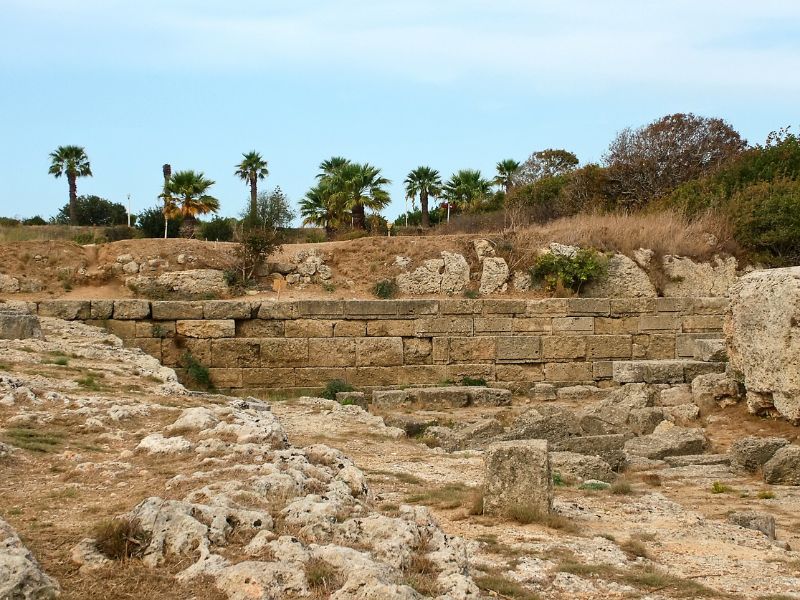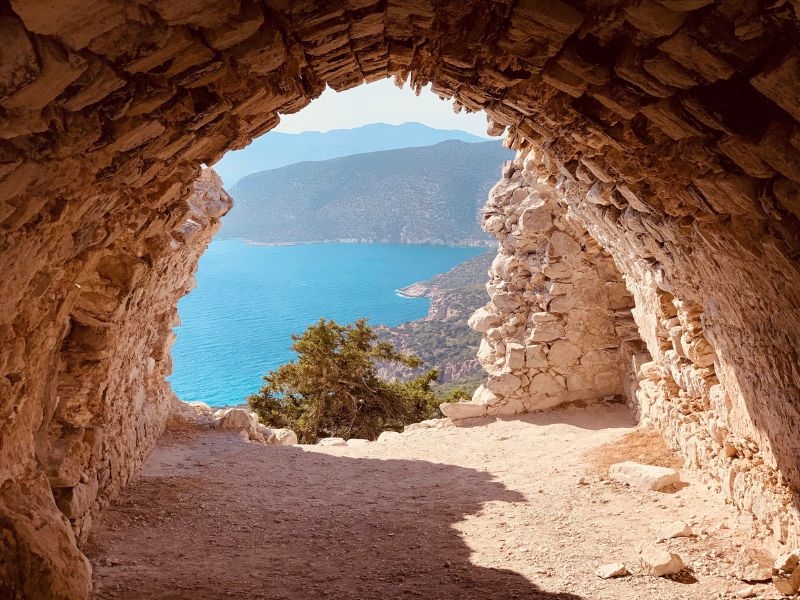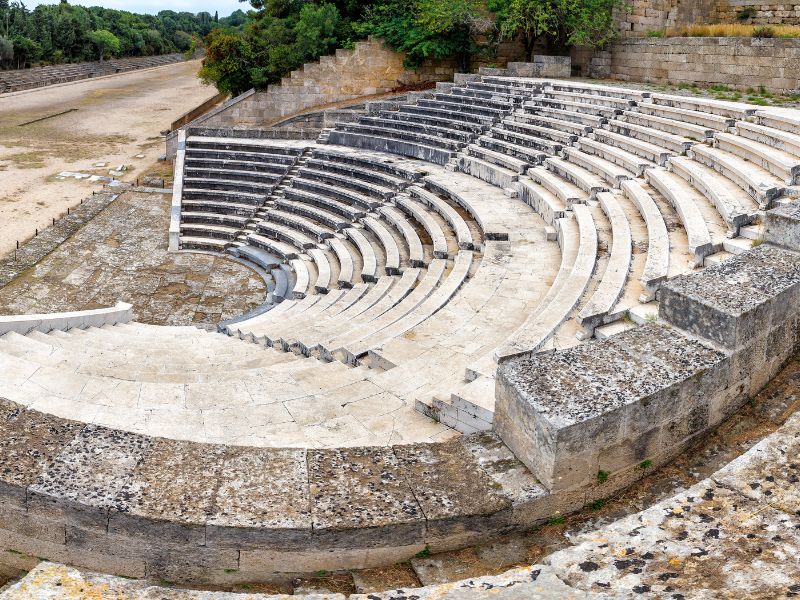
Sanctuary of the Huntress: Temple of Artemis in Rhodes
April 22, 2025
The Stylobate in Acropolis of Rhodes: The Basics of Sacred Architecture
April 30, 2025Table of Contents
Introduction
The Cavernous Sanctuary in Rhodes of Rhodes, one of the Acropolis’ holiest structures, provides insight into the most private and enigmatic facets of ancient religion. This sanctuary was shaped by stone, shadow, and the hill’s natural contours rather than marble columns like the opulent temples of Apollo or Zeus.
The grotto was a place of worship for Nymphs and chthonic deities, representing the Rhodians’ respect for fertility, water, and the invisible powers of the earth. It was partially carved by nature and partially by humans.
It offered a more subdued, intimate kind of devotion and symbolized the spiritual bond between people and the natural world. Its ruins serve as a reminder to tourists that ancient Rhodes was a city of greatness as well as a place that honored nature’s hidden powers.
Chthonic Worship and Nature
Worshiping in caves has been a part of Greek religion since its inception. Natural grottoes were interpreted as either sacred places inhabited by divine forces or as portals to the underworld. The Nymphs were most likely the deities honored in the Cavernous Sanctuary in Rhodes of Rhodes.
These small goddesses of springs, groves, and streams represented rebirth, fertility, and the life force of the natural world. In these places, worship frequently centered on the cycles of life, including birth, growth, and regeneration.
This sanctuary represented the innate spirituality of people who found divinity in water, stone, and shadow, in contrast to the colossal cults of Apollo or Helios. It struck a balance between the civic magnificence of the Acropolis and a more traditional, earthly devotion that had a direct connection to the unseen powers of nature.
The Sanctuary’s layout
Cavernous Sanctuary in Rhodes Rhodes was a naturally occurring, shallow rock-cut cave that was modified for ceremonial purposes. Archaeological evidence points to the existence of benches, troughs for libations, or niches carved into the stone.
The modestly framed entrance, which might have been made of masonry, faced the Acropolis’ lower terraces. The sanctuary’s strength was in its simplicity, as opposed to temples with sculptured embellishments and columned façades.
Its ambiance, which was a dimly lit interior with offerings glowing by torchlight, was shaped by intimacy rather than grandeur. The cave’s location, partially hidden in the hillside, strengthened its connotations of the sacred, the chthonic, and the hidden.
This sanctuary served as a reminder to the Rhodians that divinity could be found in the depths of stone and earth as well as in the open sunlight.
Offerings and Rituals
Compared to the ceremonies at Apollo’s temple or the lavish festivals of the stadium, the worship style in the Cavernous Sanctuary in Rhodes of Rhodes was very different. Offerings were more intimate and smaller here. The flickering of oil lamps against the rock represented prayers being carried into the night.
In niches were probably figurines, tokens of devotion, and simple libations of wine or water. These customs demonstrated the sanctuary’s association with protection, fertility, and nature’s capacity for regeneration.
Rituals might have included invocations connected to the island’s life and agricultural cycles, small family ceremonies, or whispered prayers. Without the need for a grand structure, this type of worship placed an emphasis on intimacy with the divine, enabling people to communicate directly with the invisible forces that ruled their universe.
The Traveler’s Experience
In contrast to the restored columns of Apollo’s temple or the open grandeur of the stadium, the Cavernous Sanctuary in Rhodes in Rhodes offers a distinct experience to the modern visitor. It has a subdued air of mystery.
As one enters, they can feel the echo of hushed prayers resonating in the stone, the way incense once filled the cave, and the way torchlight once illuminated the shadows. It serves as a reminder of how ancient Rhodians interacted with their surroundings as part of their spiritual lives and is less about spectacle and more about presence.
Despite its modest remnants, the sanctuary evokes strong feelings in visitors and gives them an opportunity to consider the hidden facets of ancient religion. The visitor is connected to the timeless, close relationship between humans and nature by standing here, rather than to the grand narratives of civic pride.
Conclusion
The variety of religious expression in ancient Rhodes is demonstrated by the Cavernous Sanctuary in Rhodes in Rhodes. This grotto symbolized the private devotions of people as well as the hidden, fertile powers of nature, whereas temples honored civic gods outdoors.
Its simplicity stood in stark contrast to the Acropolis‘ magnificence, yet taken as a whole, they created a whole spiritual landscape. The cavern sanctuary served as a reminder to the Rhodians that God was present in both stone and shadow as well as marble and sunlight.
It continues to be a site of mystery and introspection for contemporary tourists, providing a unique window into the more subdued, intimate aspects of ancient religion.





